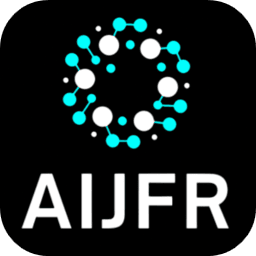
Advanced International Journal for Research
E-ISSN: 3048-7641
•
Impact Factor: 9.11
A Widely Indexed Open Access Peer Reviewed Multidisciplinary Bi-monthly Scholarly International Journal
Home
Research Paper
Submit Research Paper
Publication Guidelines
Publication Charges
Upload Documents
Track Status / Pay Fees / Download Publication Certi.
Editors & Reviewers
View All
Join as a Reviewer
Get Membership Certificate
Current Issue
Publication Archive
Conference
Publishing Conf. with AIJFR
Upcoming Conference(s) ↓
WSMCDD-2025
GSMCDD-2025
Conferences Published ↓
RBS:RH-COVID-19 (2023)
ICMRS'23
PIPRDA-2023
Contact Us
Plagiarism is checked by the leading plagiarism checker
Call for Paper
Volume 6 Issue 6
November-December 2025
Indexing Partners



















Socio Economic Implications of Poultry Farm Entrepreneurs: A Descriptive Analysis
| Author(s) | Dr. R. Karthikeyan, Dr. B. Kumutha |
|---|---|
| Country | India |
| Abstract | The poultry farming plays an important role in the cattle economy of India. Rapid growth of poultry industry has been encouraging many entrepreneurs to adopt poultry farming as business. It plays an important role in converting grain and other products into eggs and poultry meat for the non-traditional benefit of mankind. Agriculture and poultry are interdependent as the cereals form part of feed for poultry and poultry wastages are inputs for agriculture. In India, it is a vibrant fast growing and dynamic subsector of agriculture with an annual growth rate of 8-10% and production of 54 billion eggs and 2.63 million tones of chicken meat. It has also been recognized as a vital sector for sustainable generation of employment and income that ensures food security. The share of livestock and poultry sector together to the national gross domestic product is about 7% of which the contribution of poultry sector alone is about 2%. Tamil Nadu accounts for 20% of eggs produced in India, the export of eggs and egg powder is highest from Tamil Nadu. Exports generally start picking up during the winter season. There have been a number of development measures taken by both the Central and state governments to promote poultry sectors n the country. In spite of various developments in modern poultry farming, disease problems remain as a major constraint affecting its successful functioning. The present study makes an attempt to study the Socio Economic Profile of the selected Poultry Farm Entrepreneurs and the incidence of problems in one of the pioneering states of India, Tamil Nadu. The present study has adopted the Multi Stage Random Sampling Technique; has been based on Primary Data which have been collected from the selected respondents through a well structured and pre tested interview schedule. Further, for the primary data collection, a total sample of 120 Farms has been chosen based on convenience Sampling Strategy, consisting of 40 Small Farms 40 Medium Farms and 40 Large Farms. The Tamil Nadu Vision 2023 advocates that the Government would promote private industry and Public Private Partnerships in the poultry processing and egg processing industry. Favorable investment climate will be created for private investors who are willing to invest in the sector. It is a fond hope that the overall success of poultry farming depends on the efficient management of production, finance, marketing and distribution of poultry products and hence there is need for greater concentration of efforts on the improvement of activities and associated socio-economic variables of the poultry farmers. |
| Keywords | Poultry Farms, Farm Size, Socio Economic Profile, NECC, Entrepreneurs |
| Field | Sociology > Economics |
| Published In | Volume 6, Issue 4, July-August 2025 |
| Published On | 2025-08-18 |
| DOI | https://doi.org/10.63363/aijfr.2025.v06i04.1110 |
| Short DOI | https://doi.org/g9zx7m |
Share this

E-ISSN 3048-7641
CrossRef DOI is assigned to each research paper published in our journal.
AIJFR DOI prefix is
10.63363/aijfr
All research papers published on this website are licensed under Creative Commons Attribution-ShareAlike 4.0 International License, and all rights belong to their respective authors/researchers.

